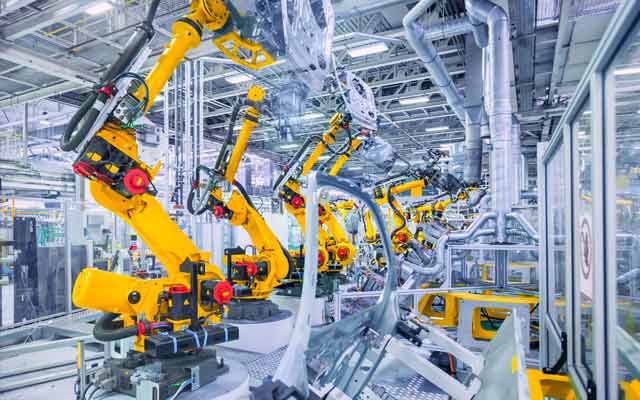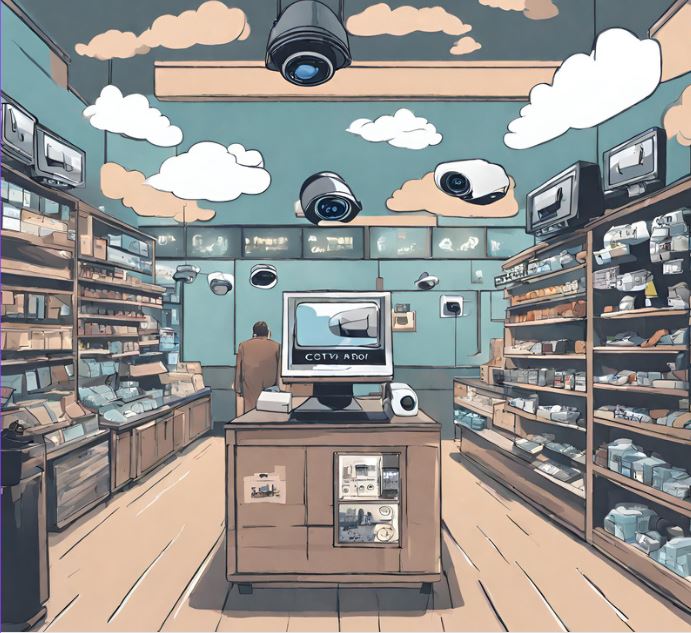New breed of AI network cameras supporting Industry 4.0 plant upgrades
There is a long history of the use of high-end, dedicated and expensive machine vision cameras for checking processes and products for quality and faults during manufacture. Other specialist cameras have been used for many years to read bar codes to enable full traceability during production processes which require this, in pharmaceutical manufacturing for example.
However, a new breed of network cameras using AI is increasingly being deployed to help factories and processing plants to accelerate the adoption of Industry 4.0, sometimes referred to as Industrial Internet of Things (IIoT) or Factory 4.0.
Growth of networked comms enabling ‘big data’ driven efficiencies
As modernising factories across the UK and beyond embrace the power for ‘big data manufacturing’, end-to-end traceability of processes, products and materials and total interconnectedness using Industrial Ethernet, Wireless or Fieldbus-based communications protocols, highly versatile and cost-effective connected cameras with in-built video analytics are also increasingly being deployed to help drive efficiencies and improve quality control.
Industry 4.0 should enable data to move like water in and out and between factory floor devices and enterprise resource planning (ERP), manufacturing execution (MES) and operations (MOM) systems.
AI cameras improving speed and accuracy of factory floor diagnosis
IIoT, pervasive sensing and data growth now represent the greatest propellers of change in our factories and smart AI-driven cameras are increasingly an enabler of that change. Network cameras, from brands such as Axis Communications, can be used to monitor every individual control point and gather large amounts of data to feed advanced preventative maintenance schemes. They can be used to collect and/or verify:
Descriptive data (‘what happened?’)
Diagnostic data (‘why did it happen?’)
Productive data (‘what is likely to happen next?’) and even
Prescriptive data (‘what action should I take next?’)
Cameras with industry-specific or bespoke video analytics can be used alongside live product, component and process-level data to increase the visibility of what is going on throughout a production line and beyond. Highly accurate, yet sophisticated analytics built into these cameras can be configured to spot areas of vulnerability, for example providing early warnings if factory components are overheating or wearing out and may need replacing before they fail.
Offering health & safety improvements
AI network cameras can also be set up to spot anomalies such as goods not following a production line direction. They can also be used to flag up potential product contamination or sabotage of equipment on a line. They might equally verify that a safety curtain has been disabled or a restricted zone entered, putting workers at risk. Other cameras have been used to ensure appropriate PPE such as hard hats and high visibility clothing are being worn, and raise alerts if this is not adhered to. Video recordings of these events can also be used as training aids to reinforce Health & Safety procedures for example.
Supporting acceleration of automation in factories
As automation including the use of robots is increased on factory floors, it becomes beneficial to use intelligent cameras to detect signs of imminent malfunctioning of robots so that engineers can intervene to run tests and put processes back on track before any end product is damaged, robots fail altogether and lines halt.
IP cameras are increasingly being used to provide visual traceability in case of industrial accidents, product contamination, or plant shutdowns due to equipment failure. It becomes much easier to analyse the source of the fault and determine any precursors to these events if high-quality video recordings can be found and analysed easily.
IP cameras in advanced diagnosis of faults and equipment failures
Visual data from AI cameras provides great support to process, product or materials data which may reveal there is a problem but not necessarily how that problem manifested itself or how it proliferated. It can help answer questions such as:
What was the root cause of that failure?
How can the line be redesigned to prevent that fault from reoccurring?
How did one failure lead to the next and how can that chain be broken in future?
What other equipment or products were affected by the initial event?
What new maintenance and monitoring regimen needs to be put in place to prevent this from happening again?
It is becoming clear that a new breed of smart cameras with embedded video analytics capabilities can help manufacturers monitor processes and provide an extra layer of health and safety protection and more widely enable to realise the IIoT vision of eliminating information silos and create the Factory 4.0 ideal in which data flowing to and from production line devices and ERP and operational technology platforms, enabling preventative maintenance, improving productivity and helping to unlock more widespread efficiencies.




